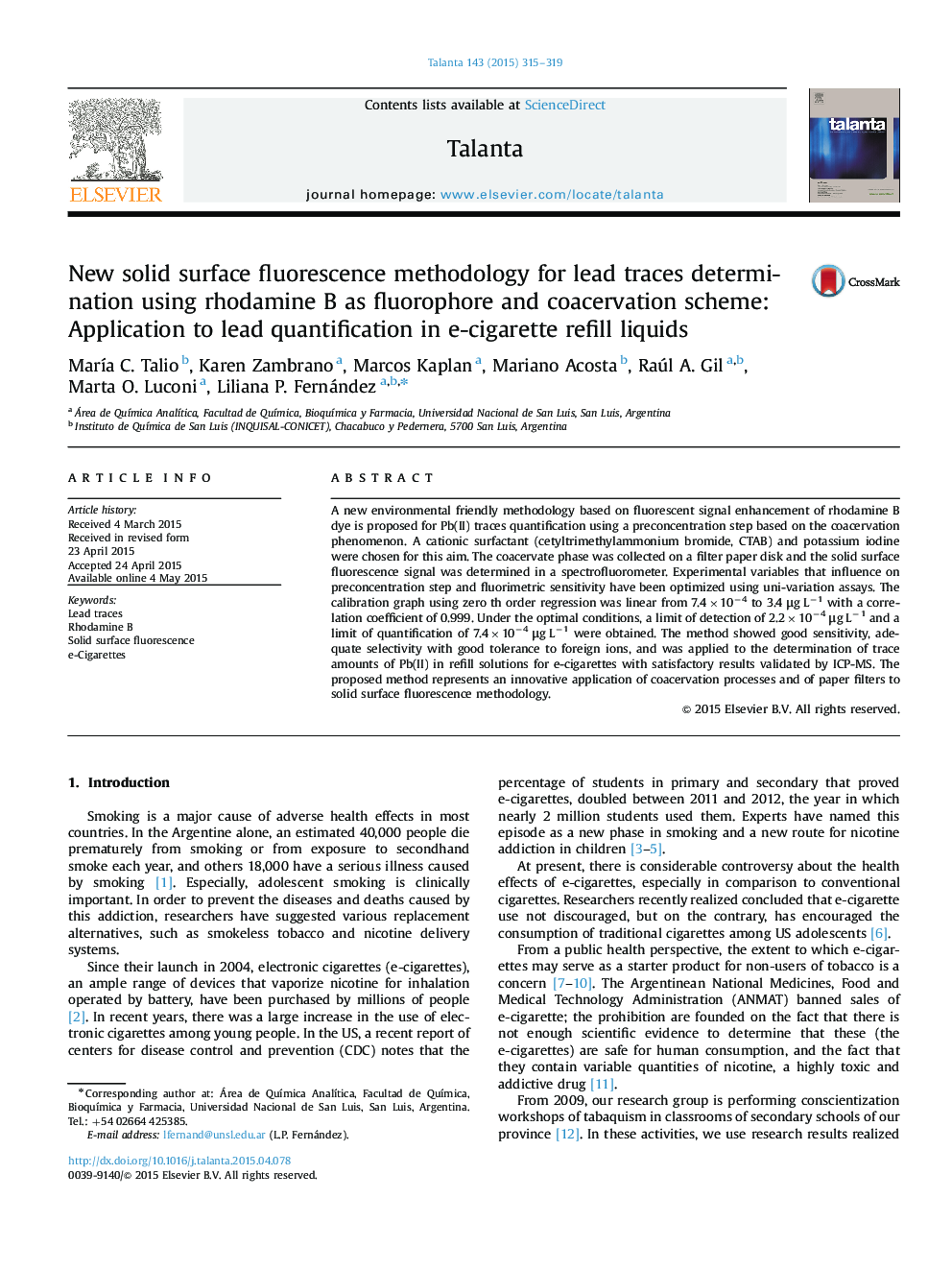| Article ID | Journal | Published Year | Pages | File Type |
|---|---|---|---|---|
| 1241891 | Talanta | 2015 | 5 Pages |
•A new economical methodology for lead traces determination is proposed.•Coacervation scheme is combined with solid surface fluorescence.•The reached sensitivity was comparable at those of atomic spectroscopies.•Lead can be quantified in refill liquid solution for e-cigarettes.
A new environmental friendly methodology based on fluorescent signal enhancement of rhodamine B dye is proposed for Pb(II) traces quantification using a preconcentration step based on the coacervation phenomenon. A cationic surfactant (cetyltrimethylammonium bromide, CTAB) and potassium iodine were chosen for this aim. The coacervate phase was collected on a filter paper disk and the solid surface fluorescence signal was determined in a spectrofluorometer. Experimental variables that influence on preconcentration step and fluorimetric sensitivity have been optimized using uni-variation assays. The calibration graph using zero th order regression was linear from 7.4×10−4 to 3.4 μg L−1 with a correlation coefficient of 0.999. Under the optimal conditions, a limit of detection of 2.2×10−4 μg L−1 and a limit of quantification of 7.4×10−4 μg L−1 were obtained. The method showed good sensitivity, adequate selectivity with good tolerance to foreign ions, and was applied to the determination of trace amounts of Pb(II) in refill solutions for e-cigarettes with satisfactory results validated by ICP-MS. The proposed method represents an innovative application of coacervation processes and of paper filters to solid surface fluorescence methodology.
Graphical abstractFigure optionsDownload full-size imageDownload as PowerPoint slide
